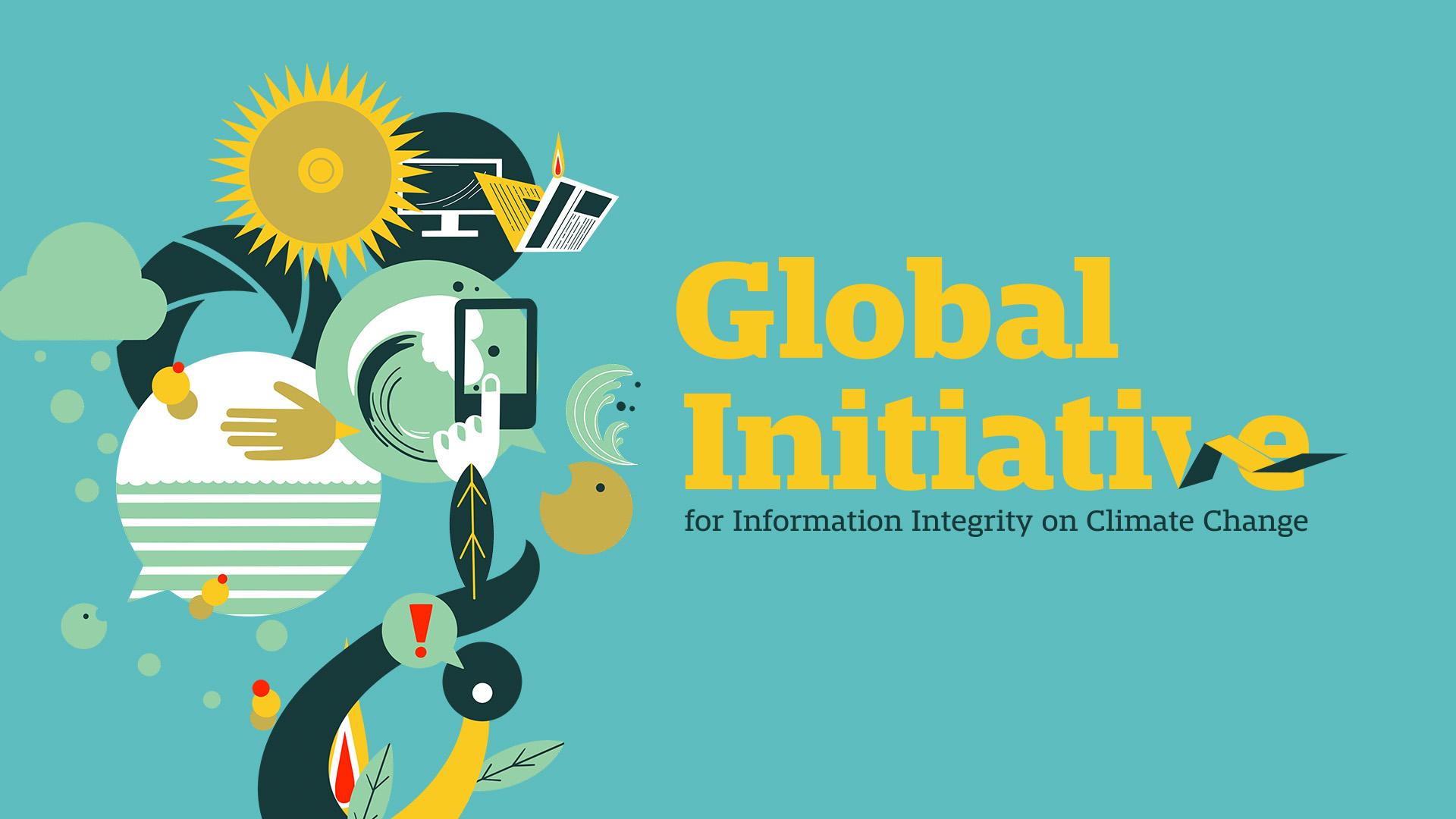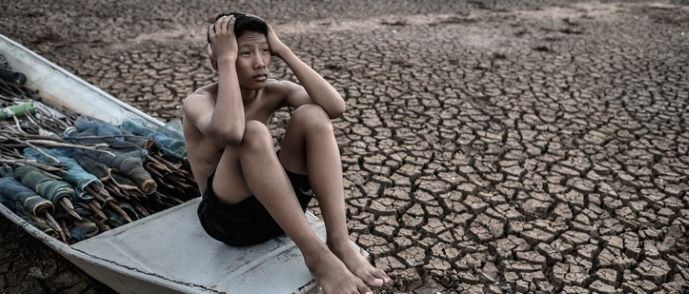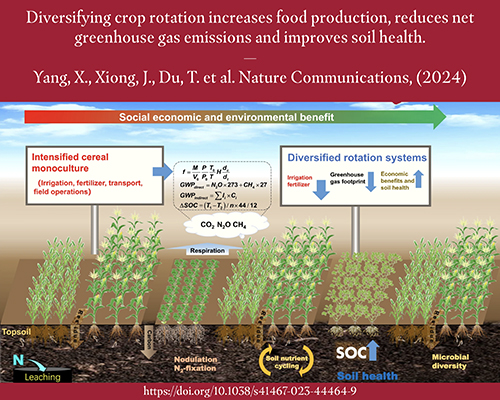Report on Climate and Disaster-Related Threats to Hawaii’s Sustainable Development
The state of Hawaii is confronting a range of severe climate and disaster-related threats that pose a significant risk to its housing sector, economic stability, and progress toward the Sustainable Development Goals (SDGs). These challenges directly undermine efforts to achieve SDG 11 (Sustainable Cities and Communities) and SDG 13 (Climate Action) by threatening the safety, resilience, and sustainability of human settlements.
Drought and Wildfire: A Threat to Community Safety and Ecosystems
Persistent drought conditions, exacerbated by climate change, have intensified the risk of wildfires across Hawaii, directly impacting SDG 11 and SDG 15 (Life on Land). The proliferation of invasive, fire-prone grass species has further compounded this threat.
- Over the past two decades, Hawaii has experienced consistently below-average rainfall.
- The annual area burned by wildfires has increased by 400 percent since the 1960s.
- The 2023 Maui fires resulted in a catastrophic loss of life and property, highlighting a failure to protect communities as mandated by SDG 3 (Good Health and Well-being) and SDG 11. The event caused over $5 billion in damage and claimed more than 100 lives.
Extreme Rainfall and Flooding: Undermining Resilient Infrastructure
Paradoxically, alongside drought, Hawaii experiences extreme rainfall events that lead to flash flooding and landslides. These events compromise the development of resilient infrastructure, a key target of SDG 9 (Industry, Innovation and Infrastructure) and SDG 11.
- In April 2018, a storm on Kauai delivered nearly 50 inches of rain in 24 hours.
- This single event flooded over 500 homes and caused an estimated $180 million in damage.
- The state’s mountainous terrain increases the risk of flash floods and severe soil erosion, which degrades land and threatens both housing and agricultural productivity, linking to SDG 2 (Zero Hunger) and SDG 15.
Hurricanes: An Intensifying Climate-Driven Risk
The increasing frequency and intensity of hurricanes, fueled by warmer sea surface temperatures, represent a direct challenge to SDG 13 (Climate Action). The destructive potential of these storms threatens to reverse decades of development progress, impacting SDG 1 (No Poverty) through massive economic losses.
- Although direct landfalls are historically rare, shifting storm tracks are projected to increase the frequency of cyclones near the islands.
- Hurricane Iniki in 1992 caused damage equivalent to over $5 billion today, demonstrating the severe economic and social disruption these events can cause.
- The potential for widespread destruction of homes, businesses, and infrastructure directly conflicts with the goal of creating safe and sustainable communities under SDG 11.
Sea-Level Rise: A Long-Term Threat to Coastal Habitability
As an island state, Hawaii is on the front line of the impacts of sea-level rise, a critical issue for SDG 13 and the long-term viability of coastal communities under SDG 11. Rising sea levels threaten to make low-lying areas uninhabitable and uninsurable.
- Since 1960, sea levels around Hawaii have risen between two and eight inches.
- Projections from the National Oceanic and Atmospheric Administration (NOAA) indicate an additional one foot of sea-level rise by 2050.
- By 2100, projections escalate to nearly four feet, which will dramatically increase coastal erosion and amplify the destructive power of storm surges and tsunamis.
Volcanic and Seismic Activity: A Compounding Geospatial Risk
In addition to climate-related threats, Hawaii faces significant geological hazards that challenge community resilience. The lack of standard insurance coverage for volcanic and earthquake damage exacerbates economic vulnerability, affecting progress toward SDG 1 (No Poverty) and SDG 11.
- The 2018 Kīlauea eruption destroyed nearly 2,000 structures, including 700 homes.
- Designated lava flow hazard zones, particularly on the Big Island, identify areas of acute risk.
- The necessity for separate, often prohibitively expensive, insurance policies creates a barrier to safe and secure housing for residents in high-risk zones, undermining the principle of inclusive and sustainable communities.
1. Which SDGs are addressed or connected to the issues highlighted in the article?
SDG 11: Sustainable Cities and Communities
- The article directly addresses the vulnerability of human settlements in Hawaii to various disasters. It focuses on the impact on the housing market, the destruction of homes (e.g., 500 homes flooded in Kauai, 700 destroyed by the Kīlauea eruption), and the significant economic damage to communities, such as the over $5 billion in damage from the Maui fires. This highlights the challenge of making cities and human settlements safe, resilient, and sustainable.
SDG 13: Climate Action
- This goal is central to the article, which explicitly links threats like drought, wildfire, extreme rainfall, hurricanes, and sea-level rise to climate change. It details how climate change exacerbates these natural hazards, for instance, by increasing drought frequency, providing more energy for hurricanes through warmer sea temperatures, and accelerating sea-level rise, thereby underscoring the urgent need for climate action and adaptation.
SDG 15: Life on Land
- The article connects to this goal through its discussion of drought, wildfire, and soil erosion. It notes that Hawaii has experienced consistently below-average rainfall, leading to increased drought and a “400 percent increase in annual area burned” by wildfires since the 1960s. Furthermore, extreme rainfall is cited as a cause of “severe soil erosion,” which relates to the degradation of terrestrial ecosystems.
2. What specific targets under those SDGs can be identified based on the article’s content?
SDG 11: Sustainable Cities and Communities
- Target 11.5: By 2030, significantly reduce the number of deaths and the number of people affected and substantially decrease the direct economic losses relative to global gross domestic product caused by disasters, including water-related disasters, with a focus on protecting the poor and people in vulnerable situations.
- The article provides concrete examples of the impacts this target aims to reduce, including the “more than 100 people” killed in the 2023 Maui fires and the significant economic losses from various disasters (e.g., “$5 billion in damage” from the Maui fires, “$180 million in damage” from the 2018 Kauai floods, and over “$5 billion today” from Hurricane Iniki in 1992).
SDG 13: Climate Action
- Target 13.1: Strengthen resilience and adaptive capacity to climate-related hazards and natural disasters in all countries.
- The article’s entire premise is built on Hawaii’s vulnerability to climate-related hazards. The descriptions of an increasingly strained and expensive housing and insurance market, coupled with projections of future threats like a one-foot sea-level rise by 2050, directly point to the urgent need to strengthen the state’s resilience and adaptive capacity.
SDG 15: Life on Land
- Target 15.3: By 2030, combat desertification, restore degraded land and soil, including land affected by desertification, drought and floods, and strive to achieve a land degradation-neutral world.
- The article’s mention of “consistently below-average rainfall,” record low rainfall over a 10-year period, and increased drought frequency directly relates to the challenges of desertification and land degradation. The “400 percent increase in annual area burned” by wildfire is a clear manifestation of land degradation discussed in the text.
3. Are there any indicators mentioned or implied in the article that can be used to measure progress towards the identified targets?
Indicators for Target 11.5 and 13.1
- Indicator 11.5.1 / 13.1.1: Number of deaths, missing persons and directly affected persons attributed to disasters per 100,000 population.
- The article provides absolute numbers that can be used for this indicator, such as the “more than 100 people” killed in the Maui fires and the hundreds of homes destroyed or flooded, directly affecting their inhabitants (e.g., “flooding over 500 homes” in Kauai).
- Indicator 11.5.2: Direct economic loss in relation to global gross domestic product (GDP), including disaster damage to critical infrastructure and disruption of basic services.
- The article explicitly states direct economic losses from specific disasters, which are direct inputs for this indicator. Examples include “more than $5 billion in damage” from the Maui fires, an “estimated $180 million in damage” from the Kauai storm, and damage from Hurricane Iniki “equivalent to more than $5 billion today.”
Indicator for Target 15.3
- Indicator 15.3.1: Proportion of land that is degraded over total land area.
- The article provides data that serves as a proxy for this indicator. The statement that the annual area burned by wildfire “has increased in annual area by 400 percent since the 1960s” is a quantifiable measure of land degradation due to fire. The mention of “severe soil erosion” also implies land degradation.
4. Create a table with three columns titled ‘SDGs, Targets and Indicators” to present the findings from analyzing the article. In this table, list the Sustainable Development Goals (SDGs), their corresponding targets, and the specific indicators identified in the article.
| SDGs | Targets | Indicators |
|---|---|---|
| SDG 11: Sustainable Cities and Communities | Target 11.5: Significantly reduce the number of deaths, affected people, and direct economic losses caused by disasters. |
|
| SDG 13: Climate Action | Target 13.1: Strengthen resilience and adaptive capacity to climate-related hazards and natural disasters. |
|
| SDG 15: Life on Land | Target 15.3: Combat desertification, restore degraded land and soil. |
|
Source: newamerica.org







